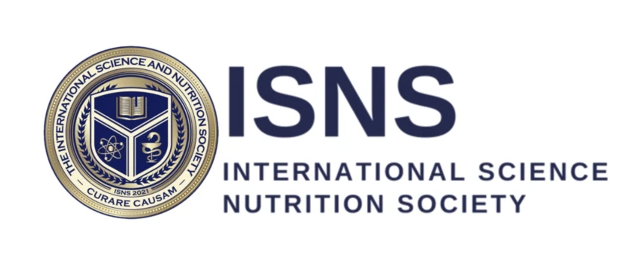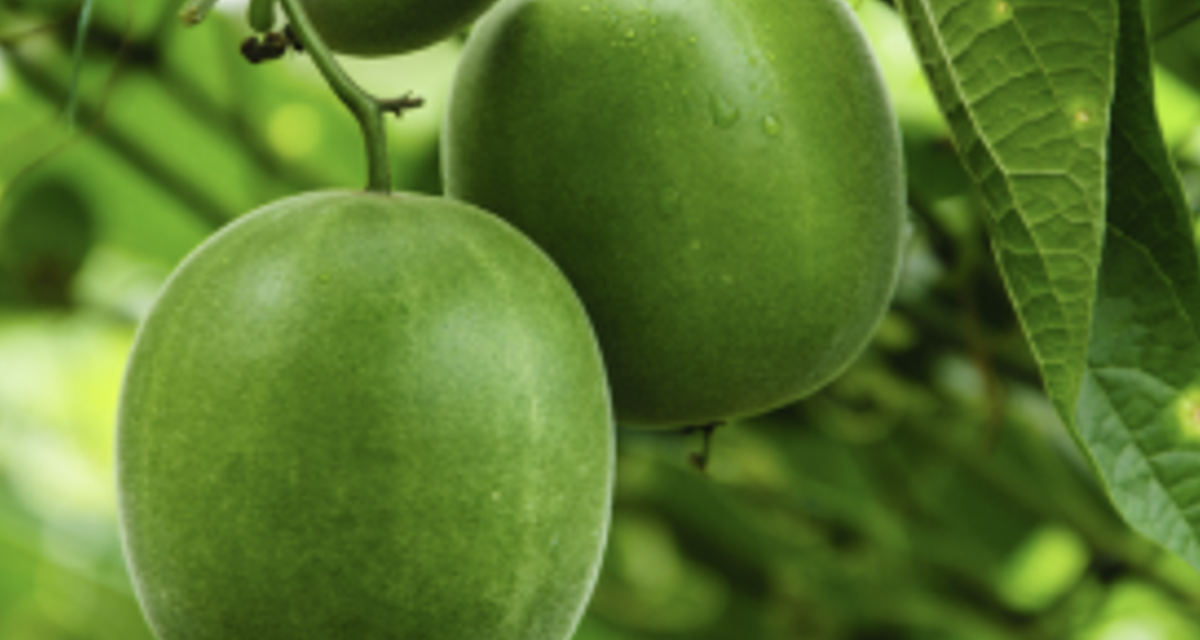Why Everyone’s Going Mad for Monk Fruit Natalie Butler, R.D., L.D.
The monk fruit, also known as lo han guo, is a small green melon that originated in south China and was named for the monks who first cultivated it centuries ago. The fruit’s health benefits have been well-known in Traditional Chinese Medicine (TCM) for decades, but now it’s finding its way into the health mainstream. Monk fruit sweetener is made from dried fruit extract. The extract is 150-250 times more effective than table sugar, contains no calories or carbohydrates, and does not cause blood glucose levels to rise. Monk fruit is “generally accepted as healthy (GRAS)” for all, including pregnant women and infants, according to the FDA. The monk fruit has a number of health advantages, including being healthy for diabetics, promoting weight loss, and having anti-inflammatory properties. Natural compounds called mogrosides give monk fruit its sweetness. Since it does not raise blood sugar levels, it is generally healthy for diabetics. Monk fruit also has no calories, carbs, or fat, making it a good option for those watching their weight. Monk fruit has been used in TCM for centuries to make hot beverages that alleviate sore throats and suppress phlegm, according to a 2011 report. Mogrosides, which are found in the fruit, are anti-inflammatory and can help prevent cancer and reduce blood sugar levels.
Monk Fruit: Natures Best Sweetener?
Jillian Levy, CHHC
With sugar consumption at an all-time peak, many consumers have made it a priority to pursue natural sweet substitutes. The concern is that, contrary to popular belief, sugar substitutes and artificial sweeteners also contain other unhealthy chemicals and additives, and some also contain calories and affect blood sugar levels. Monk fruits were originally cultivated in China’s Guangxi and Guangdong Mountains, where they are now rare to find in the wild. Monk fruit and its genetic material have been banned by the Chinese government, preventing them from leaving the region. It has been used medicinally throughout history as an expectorant, cough cure, constipation cure, and a solution for removing heat/fevers from the body. Experts now consider sweet extracts from natural plants, such as stevia and monk fruit, to be viable sugar substitutes.
Effects of Aspartame, Monk Fruit, Stevia, and Sucrose-Sweetened Beverages on Postprandial Glucose, Insulin and Energy Intake
S L Tey, N B Salleh, J Henry, and C G Forde
Non-nutritive sweeteners (NNS) can help with glycaemic regulation and body weight maintenance as sweeteners are replaced. Energy compensation, glycaemic, and insulinaemic reactions to artificial and natural NNS have only been studied in a few trials. The effects of eating NNS (artificial versus natural) and sucrose (65 g) on energy consumption, blood glucose, and insulin responses were compared in this study. When compared to a sucrose-sweetened soda, calorie-free drinks sweetened with artificial and natural NNS have negligible effects on overall daily energy intake, postprandial glucose, and insulin.
In Search for an Alternative to Sugar to Reduce Obesity
Arshag D Mooradian
Despite public health authorities’ concerns about the possible negative effects of sugar intake, people are eating more of it. Sugar consumption should be limited to no more than 10% of daily caloric intake, with a goal of lowering this to 5% or less for optimum health, according to the World Health Organization. Unfortunately, replacing sugar with commercially available artificial sweeteners does not seem to have a positive impact on health outcomes. While sugars make up the majority of sweeteners, certain proteins, such as braziien and miraculin, have a high sweetness and are being produced as sweeteners. To eliminate flavor defects, some firms are working on developing “bitterness-blockers.” Additional randomized controlled trials are required to determine the sugars’ long-term safety and effectiveness.
Recent Evidence for the Effects of Nonnutritive Sweeteners on Glycaemic Control
Samar Y Ahmad, Meghan B Azad, James Friel, and Dylan MacKay
Nonnutritive sweeteners (NNSs) are believed to help with weight loss and insulin tolerance by replacing fat. They looked at the more recent randomized controlled trials (RCTs) on the impact of NNSs on glycemic regulation. They are still unable to determine which forms of NNS, if any, have an effect on glycemic regulation. More study is needed to address the shortcomings of recent RCTs, such as sample size, intervention length, dosage, type of NNSs used, and inclusion of only males or females. Future research should compare and contrast various NNS forms, including the highly common ‘natural’ NNS.
Safety of Use of Monk Fruit Extract as a Food Additive in Different Food Categories
EFSA Panel on Food Additives and Flavourings (FAF) Maged Younes Gabriele Aquilina Karl‐Heinz Engel Paul Fowler Maria Jose Frutos Fernandez Peter Fürst Rainer Gürtler Ursula Gundert‐Remy Trine Husøy Wim Mennes Peter Moldeus Agneta Oskarsson Romina Shah Ine Waalkens‐Berendsen Detlef Wölfle Gisela Degen Lieve Herman David Gott Jean‐Charles Leblanc Alessandra Giarola Ana Maria Rincon Alexandra Tard Laurence Castl
The European Food Safety Authority’s (EFSA) Panel on Food Additives and Flavourings (FAF) has issued a scientific opinion on the safety of Monk fruit extract, which has been recommended for use as a new food additive in a variety of foods. Water extraction of the fruits of Siraitia grosvenorii produces monk fruit extracts. In the bacterial reverse mutation assay, monk fruit extracts containing 25% and 55% mogroside V were negative and did not cause structural or numerical chromosomal damage. The Panel did acknowledge, however, that in vitro toxicity tests, particularly those involving metabolic activation, were insufficient to assess the genotoxic capacity of metabolites produced by microbial metabolism, including the aglycone.
Effects of a Synbiotic Yogurt Using Monk Fruit Extract as Sweetener on Glucose Regulation and Gut Microbiota in Rats with Type 2 Diabetes Mellitus
Qingfeng Ban, Jianjun Cheng, Xiaomeng Sun, Yunqing Jiang, Shanbo Zhao, Xiao Song, and Mingruo Guo
They created a synbiotic yogurt with monk fruit extract as a sweetener and tested its effectiveness on rats with type 2 diabetes caused by streptozotocin as well as a high-fat diet.When compared to rats fed sucrose-sweetened yogurt, the rats fed synbiotic yogurt had better blood glucose control and a substantial reduction in insulin resistance and glycosylated hemoglobin, as well as a substantial increase in short-chain fatty acid levels and gut microbiota status. Their findings suggest that monk fruit extract may be a suitable substitute for sucrose in synbiotic yogurt products for people with type 2 diabetes who would like to slow the development of the disease and its complications.
The Biosynthetic Pathway of the No Sugar, High Intensity Sweetener Mogroside V from Siraitia Grosvenorii
Maxim Itkin, Rachel Davidovich-Rikanati, Shahar Cohen, Vitaly Portnoy, Adi Doron-Faigenboim, Elad Oren, Shiri Freilich, Galil Tzuri, Nadine Baranes, Shmuel Shen, Marina Petreikov, Rotem Sertchook, Shifra Ben-Dor, Hugo Gottlieb, Alvaro Hernandez, David R. Nelson, Harry S. Paris, Yaakov Tadmor, Yosef Burger, Efraim Lewinsohn, Nurit Katzir, and Arthur Schaffer
Sweetener use, both natural and refined sugars, has been linked to a slew of modern-day health issues. As a result, natural non-sugar sweeteners are gaining popularity. Squalene epoxidases, triterpenoid synthases, epoxide hydrolases, cytochrome P450s, and UDP glucosyltransferases are the five enzyme families responsible for the synthesis of mogroside V, according to a functional expression study of nearly 200 candidate genes. The experimentally validated functional enzyme activities were confirmed by protein simulation and docking trials, which also revealed the sequence of the metabolic steps in the pathway. When comparing the genomic organization and expression patterns of these Siraitia genes to those of other Cucurbitaceae orthologs, a remarkably organized expression of the pathway seems to have played a role in the evolution of this species-specific and important metabolic pathway. On the other hand, the pathway genes’ genomic organization, which is syntenously preserved among the Cucurbitaceae, indicates that gene clustering cannot account for this novel secondary metabolic pathway.

